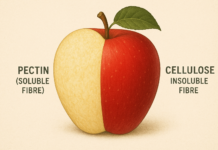By Safa’ Thaher, Sustainable Fashion Enthusiast
As the world increasingly recognises the importance of sustainability, it is clear that sustainable fashion is not a trend; rather, it represents the future of the fashion industry.
The term “sustainable fashion” has become more common, the principles behind it have been ingrained in many cultures and family practices for generations.
A childhood experience
My personal connection to sustainable fashion began in childhood. Growing up in a family deeply engaged in tailoring and fashion. I learned the significance of creativity, resourcefulness and mindful consumption.
Our celebrations, including my wedding, were marked by handmade items crafted by my mother and sisters, instilling in me a love for colours, nature, heritage and adaptive design.
Preserving resources
Various terms like “conscious fashion”, “ethical fashion” and “eco-fashion” have similar values centered around preserving our planet’s resources and supporting our communities.
The responsibility for sustainable fashion lies equally between designers and consumers, each playing an important role.
For designers like myself, sustainable fashion involves sourcing, designing and retailing garments with minimal environmental impact—particularly concerning air, water and societal effects.
This commitment requires processes that use limited resources and result in products that are renewable and can reintegrate into nature seamlessly.
For consumers, sustainable fashion signifies a lifestyle choice that can significantly reduce our carbon footprints. The way we shop and care for our clothing can save our planet’s soil, freshwater and oceans.
Embracing the “7 Rs” of sustainable fashion can serve as a guideline in this journey:
1. Reduce: Sustainable fashion starts with minimising new clothing purchases. Instead of following every trend, you can shop for timeless pieces that won’t go out of style.
Wearing clothing for as long as possible is the best way to lessen our fashion-related carbon footprint
2. Reuse: If you have wearable clothes that no longer serve you, you can gift items to family or friends or donate them to those in need
3. Recycle: For clothing that is no longer wearable, I focus on recycling; I focus on transforming damaged items into new creations and reducing waste
4. Rethink/Research: By educating yourself about sustainable fashion practices, you become a conscious consumer. You don’t need to be an expert, but staying informed can influence your purchasing decisions positively
5. Repurpose: Giving clothing a new life through upcycling showcases creativity. For example, you can transform worn-out denim into a chic bag or use fabric scraps for home décor.
In this photo you can see what I did with a table setter. I tried bringing new life to an item that was once simply a table setter, turning it into a functional clutch.
This kind of upcycling is an example of reimagining everyday objects, transforming something that is no longer needed into something useful and fashionable.
The process involves recognising the potential in overlooked items and repurposing them in innovative ways—this is exactly what makes upcycling so powerful.
I focus on giving old or unused objects a fresh purpose. The clutch not only serves as a practical accessory, but also tells a story of creativity and sustainability
6. Repair: Did you know that a dye job can revive tired clothes? By repairing items, we can extend their lifespan.
Here, I transformed a small, white scarf into something more vibrant and unique. I added a green tassel not only to increase the scarf’s size visually, but also to give it a fresh, lively feel.
This small modification brings a new sense of style and personality to an otherwise simple accessory.
This is how slight details can turn an item into something personal and special!
7. Rent: For those special occasions, renting special pieces instead of buying them can be a sustainable choice, reducing the number of pieces that go unworn in our closet
Throughout my life, I have participated in various projects focused on environmental sustainability, continuously striving to enhance my understanding and awareness of these crucial issues.
As my body size changed over time, I became particularly invested in preserving pieces that held sentimental value—pieces made by my mother and sisters.
This journey led to the creation of multi-functional clothing and accessories designed to suit different seasons and occasions, maintaining high-quality, timeless styles close to a zero-waste philosophy
I changed this outfit by combining creativity and practicality. I altered my trousers to fit my new size by incorporating traditional fabric for a personalised touch.
Ultimately, fostering sustainable fashion is a collective responsibility that transcends individual actions. We must work together to ensure a healthier planet for future generations. Remember, even the smallest steps can contribute to monumental change. We all have the opportunity to begin this journey by adopting one small practice into our daily lives, applying the way for a sustainable future in fashion and beyond.
You can reach out to Safa’ Thaher at [email protected]






